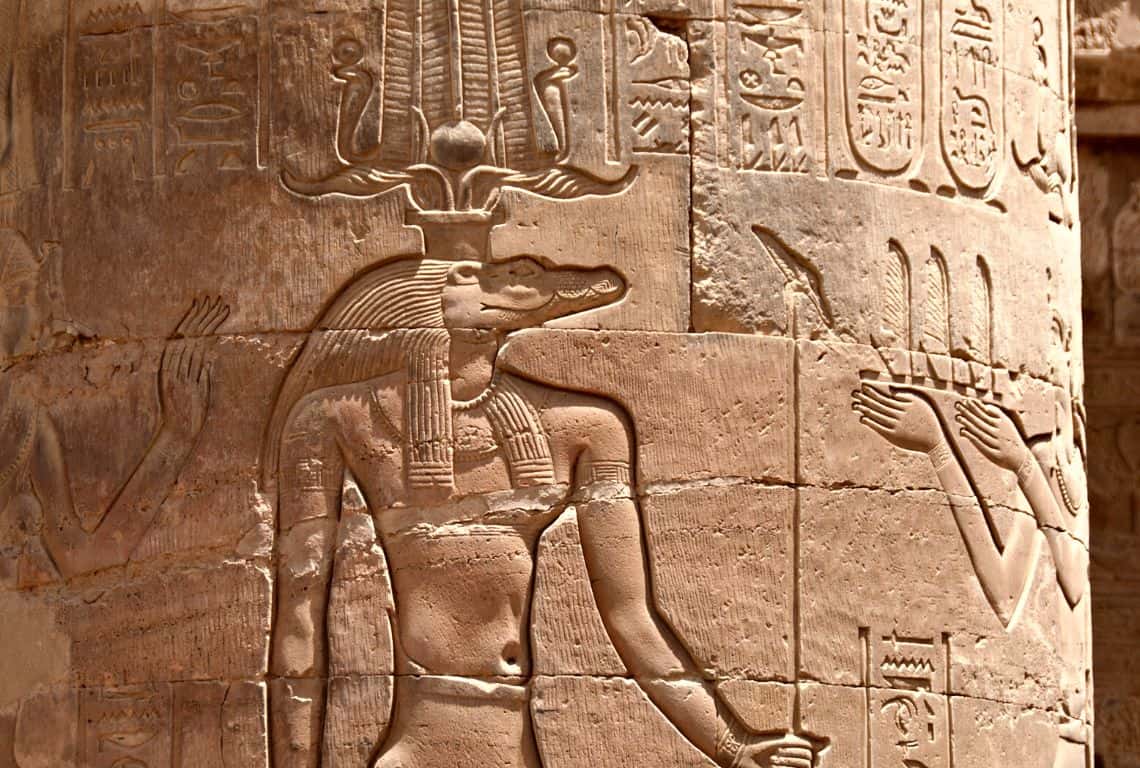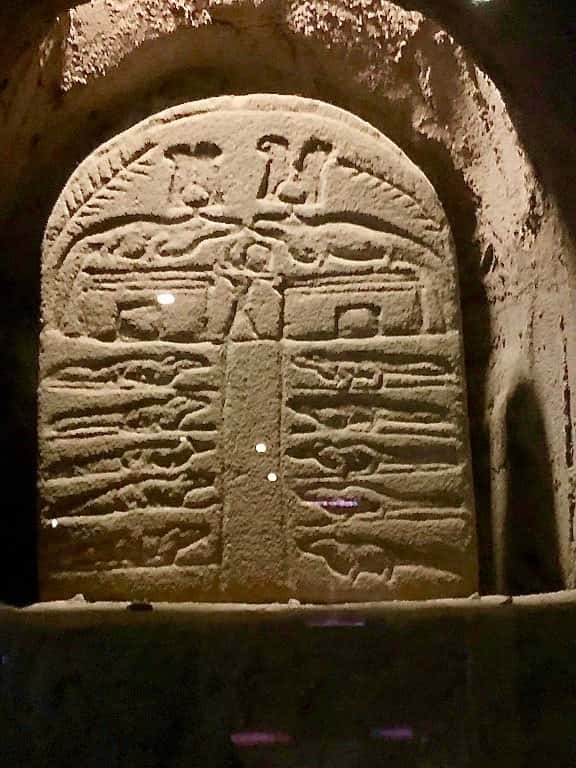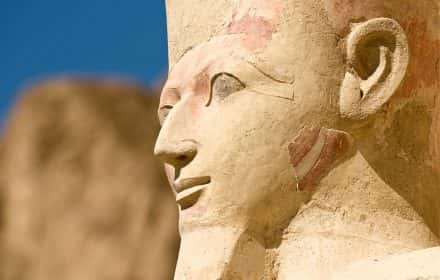This site uses affiliate links, meaning that if you make a purchase through our links, we may earn an affiliate commission.
Nestled along the serene banks of the majestic Nile River, the Crocodile Mummy Museum in Kom Ombo beckons to those with a thirst for ancient history and a fascination with the enigmatic creatures that once roamed Egypt’s waters.
This hidden gem in the heart of Egypt offers a journey back in time to an era when crocodiles were not just fearsome predators but also revered beings of mystic significance.
In this remarkable exploration, we invite you to embark on a virtual adventure to uncover 7 mesmerizing wonders concealed within the walls of this extraordinary museum.
From its captivating artifacts to the secrets of ancient rituals, from architectural marvels to the scientific discoveries that continue to unfold, the Crocodile Mummy Museum stands as a testament to Egypt’s rich heritage and the enduring mysteries of the Nile.
PRO TIP: Located next to the museum is the iconic Kom Ombo Temple. Find out more about it: What to See at the Temple of Kom Ombo (9 Amazing Things You Can’t Miss)
Crocodile Mummy Museum in Kom Ombo - Uncover 7 Astonishing Secrets
Intriguing Ancient Artifacts at Crocodile Mummy Museum in Kom Ombo
Upon entering the Crocodile Mummy Museum in Kom Ombo, your senses are immediately engulfed by the air of mystique that surrounds the incredible display of crocodile mummies.
These remarkable artifacts have a unique origin, originating from the necropolis near the quaint village of El-Shatb, located approximately 2 kilometers to the south of the Temple of Kom Ombo.
The necropolis itself holds a fascinating historical backdrop, having been utilized for human burials from the Middle Kingdom era through the Greco-Roman period.
However, what sets this site apart is its remarkable cache of animal mummies, among which the crocodiles take center stage.

Crocodile mummies / Why You Should Visit Crocodile Mummy Museum in Kom Ombo
The Crocodile Mummy Museum houses these crocodile mummies, offering visitors a rare opportunity to explore not only the artifacts themselves but also the intriguing history of their discovery.
Each crocodile mummy tells a unique story, some were dedicated to Sobek, the powerful crocodile god associated with fertility and protection, while others were offerings made to appease these mighty creatures.

Crocodile mummies / Why You Should Visit Crocodile Mummy Museum in Kom Ombo
Their presence in the museum will allow to glimpse into the world of ancient rituals, where life and death were intricately entwined.
The level of detail in the mummification process, from the delicate bandages to the intricate amulets placed alongside them, provides a fascinating glimpse into the artistry and devotion of ancient Egyptian culture.
Historical Significance of Crocodile Mummification
The crocodile mummies within the Crocodile Mummy Museum in Kom Ombo hold a historical significance that reaches deep into the heart of ancient Egyptian spirituality and culture.
To the Egyptians, the gods were believed to send physical manifestations of themselves to Earth, often in the form of symbolic animals. Among these sacred creatures, the Nile crocodile held a place of profound reverence.
At the center of this reverence was the god Sobek, often depicted as a fearsome crocodile or as a deity with the head of a crocodile.
He would be adorned with a plumed headdress, crowned by the sun disk and two horns, symbolizing his divine power. The Temple of Kom Ombo itself features intricate reliefs depicting Sobek, showcasing the significance of this deity in the region.

Relief from the Temple of Kom Ombo depicting Sobek / Crocodile Mummy Museum in Kom Ombo
Sobek’s role in Egyptian mythology was multifaceted. He was not only revered as a creator god, but he also played a vital role in maintaining the fertility of the land.
According to some myths, he formed the mighty River Nile from his sweat, ensuring the prosperity of the land and its people. As a fertility god, Sobek was also associated with abundance and growth, making him a vital figure in the agricultural aspect of Egyptian life.
Moreover, Sobek was considered the patron of the army, embodying strength and protection.
He was regarded as a symbol of the Pharaoh’s power and a guardian of the rulers. In times of need, the Pharaoh would invoke Sobek’s might for guidance and support.

Sculpture of Sobek with Amenhotep III / Crocodile Mummy Museum in Kom Ombo
This profound connection between Sobek, the crocodile mummies, and the ancient Egyptian way of life is beautifully showcased within the Crocodile Mummy Museum.
Here, you can witness sculptures depicting Sobek and Pharaoh Amenhotep III, illustrating the special bond that some rulers felt with this deity.
Additionally, the museum houses a stunning votive dating back to the reign of Amenhotep III, portraying a pair of crocodiles on the base of the block, adorned with intricate decorations on all sides.
These artifacts stand as a testament to the enduring legacy of Sobek and his significance in the rich tapestry of ancient Egyptian history and belief.

Votive dating back to the reign of Amenhotep III / Crocodile Mummy Museum in Kom Ombo

Votive dating back to the reign of Amenhotep III / Crocodile Mummy Museum in Kom Ombo
- The average size of the Nile crocodile ranges between 10-20 feet in length. The weight could be anywhere between 300 to 1,650 pounds.
- In the wild, the Nile crocodiles have the potential to live between 70 to 100 years of age.
- The females usually lay between 25 to 80 eggs. Interestingly, the sex of the offspring is determined by the surrounding temperature. When the temperatures are low, the hatchlings are all females, when the temperatures are high between 89 to 94 F, then the offspring will be males.
Sacred Crocodile Pools
A hidden marvel within the Crocodile Mummy Museum in Kom Ombo lies in its connection to the ancient practice of housing live crocodiles in sacred pools.
These pools, once an integral part of the temple complex, served as sanctuaries for live crocodiles revered as divine beings.
The museum’s historical significance extends beyond the mummified remnants of these reptilian creatures, offering visitors a glimpse into a fascinating chapter of ancient Egyptian spirituality.
In antiquity, crocodiles were considered protectors and symbols of the powerful god Sobek, and these sacred pools were dedicated to their care.
Pilgrims and devotees would visit these pools to offer prayers and tributes to the resident crocodiles, believing that by doing so, they could invoke the favor of Sobek and ensure the fertility and abundance of the Nile.
Mummification Techniques
One of the most captivating aspects of the Crocodile Mummy Museum in Kom Ombo is its unique insight into the meticulous art of mummification, specifically as applied to crocodiles.
These live crocodiles were not merely creatures of the Nile but revered deities themselves. The priests of the temple worshiped and cared for them during their lives, believing that the soul of the god Sobek would inhabit the body of another crocodile upon their passing.
Thus, the transition from life to the afterlife was a sacred process.

Crocodile Mummies / Crocodile Mummy Museum in Kom Ombo
Notably, the crocodile mummification process began with desiccation using natron, a naturally occurring salt. This step helped preserve the crocodile’s body by removing moisture.
Subsequently, the crocodile was carefully wrapped in linen bandages saturated with resins and oils, ensuring both preservation and protection for the journey to the afterlife.
As you explore the Crocodile Mummy Museum, you will have the opportunity to witness the tangible results of these intricate mummification techniques.
On display, you will find a mummified crocodile placed on a bier, a poignant testament to the reverence with which these creatures were treated.

Crocodile Mummies / Crocodile Mummy Museum in Kom Ombo
Additionally, the museum showcases several ceramic coffins, each intricately designed to protect the mummies within.
These artifacts not only showcase the artistry of ancient Egyptian embalmers but also offer a glimpse into the spiritual beliefs and practices that surrounded the sacred crocodiles of Kom Ombo.
The Offerings of the Pilgrims
Pilgrims who embarked on spiritual journeys to the Temple of Kom Ombo, a revered sanctuary dedicated to the crocodile god Sobek, carried with them heartfelt votive offerings.

Pilgrims offerings / Crocodile Mummy Museum in Kom Ombo
These offerings came in various forms, reflecting the deep devotion of the worshippers. Ranging from small mummified crocodiles to intricate statues, these tokens of faith symbolized the seekers’ reverence for Sobek and their desire for his blessings.

Pilgrims offerings / Crocodile Mummy Museum in Kom Ombo
Within the hallowed halls of the Crocodile Mummy Museum, you will encounter an extensive collection of stelae, bearing witness to the gratitude and devotion of countless pilgrims who once sought solace and favor from the crocodile god.

Stelae on display / Crocodile Mummy Museum in Kom Ombo
Some of these stelae are adorned with meticulously carved images of Sobek, capturing his powerful and enigmatic presence.
Others bear the names of the dedicants, allowing us to connect with the individuals who once stood before these sacred altars and made offerings in pursuit of divine blessings.

Stelae on display / Crocodile Mummy Museum in Kom Ombo
Among the treasured offerings to Sobek were crocodile eggs and fetuses, a testament to the intimate connection between the god and his reptilian companions.

Mummified crocodile eggs and fetuses / Crocodile Mummy Museum in Kom Ombo
These offerings, both symbolic and significant, speak to the enduring tradition of seeking protection, fertility, and abundance from the deity associated with the Nile’s guardian.
As you explore the museum, you’ll come face to face with these tangible expressions of faith, each offering and stela a poignant reminder of the deep spiritual ties that bound the ancient worshippers of Sobek to the Temple of Kom Ombo.
You Might Also Like:
How to Visit and What to See at KHAN EL-KHALILI BAZAAR in Cairo
Perfect 7-Day Egypt Itinerary for First Visit (Cairo, Aswan, Luxor, Abu Simbel)
What to See at the TEMPLE of HORUS at EDFU (5 Things You Can’t Miss)
What to See at the TEMPLE of KOM OMBO, Egypt (9 Things You Can’t Miss)
How to Visit Abu Simbel: Everything You Need to Know to Plan Your Visit
How to Visit and What to See at the TEMPLE of PHILAE in Aswan
Best Day Trip from Cairo – Dahshur, Memphis, and Saqqara (Maps+Photos)
19 Must-See Things at Egyptian Museum in Cairo (+Practical Tips)
Now, It Is Your Turn, I Would Like to Hear Back from You!
Are you planning your trip to Egypt?
Please let me know! Drop me a quick comment right below!
Click on any of the images below to get inspired and to help you with the planning process for your trip to Egypt!





